Welcome to Moda Fabrics!
Buttoning Up the Competition
Buttoning Up the Competition
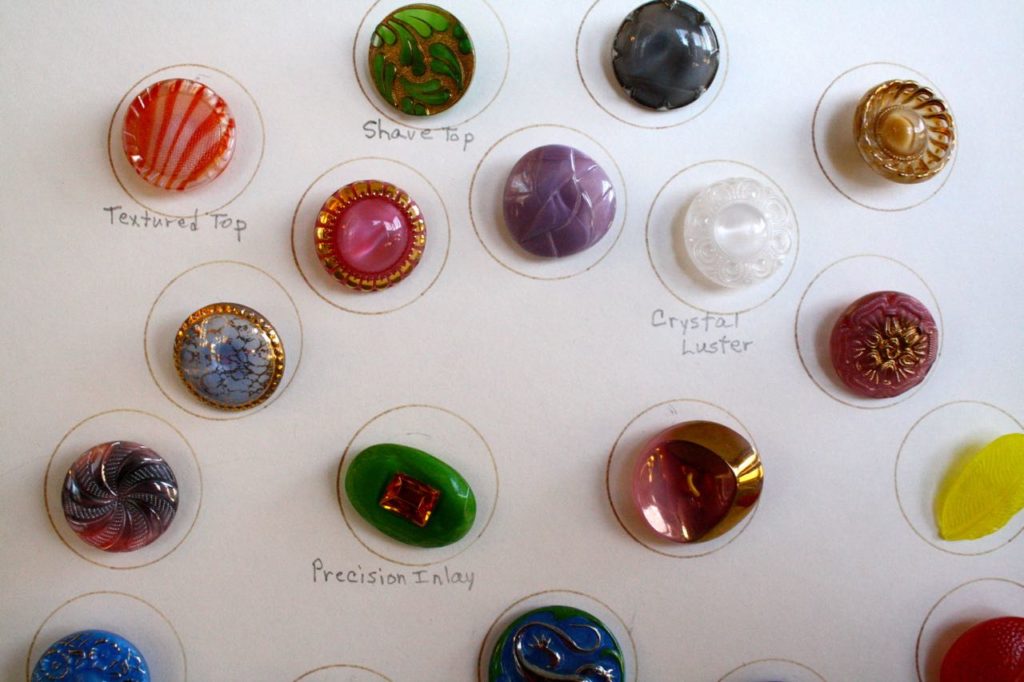 When you think of competition, what images come to mind? Swimmers slicing through chlorinated water in search of Olympic gold? Miss South Dakota out-poising Miss Florida during the Q&A segment of the Miss America pageant? Harvard vs. Yale vs. Stanford in the annual college rankings? Competitors abound in every arena, but I recently discovered one that took me by surprise: buttons.
When you think of competition, what images come to mind? Swimmers slicing through chlorinated water in search of Olympic gold? Miss South Dakota out-poising Miss Florida during the Q&A segment of the Miss America pageant? Harvard vs. Yale vs. Stanford in the annual college rankings? Competitors abound in every arena, but I recently discovered one that took me by surprise: buttons.
It turns out that button collectors go head-to-head with regularity, competing in judged events for ribbons and recognition. But before you conjure images of button warriors, personal button trainers, and button marathons, take heart. Button competitions tend to be friendly rather than fierce, and button competitors participate as a way to learn more about buttons’ history and provenance and to share their hobby with like-minded individuals, rather than to crush their opponents.
 My invitation to learn about button competitions came in 2012 from Iowa button collectors Kareen Strumpl and Barb Colvin. When I first met them, they sat across from one another, surrounded by buttons. Muffin tins, bowls, baskets, and boxes filled with buttons covered the table between them. The women were dividing a button collection purchased from the family of a deceased collector.
My invitation to learn about button competitions came in 2012 from Iowa button collectors Kareen Strumpl and Barb Colvin. When I first met them, they sat across from one another, surrounded by buttons. Muffin tins, bowls, baskets, and boxes filled with buttons covered the table between them. The women were dividing a button collection purchased from the family of a deceased collector.
“When the woman died, she left one son her car and the other her button collection,” says Kareen. “They were of equal value.”
Barb’s initial attraction to buttons started at age five, when her grandmother introduced her to button collecting. “I loved ‘em because she loved ‘em,” says Barb. “My grandmother was widowed at 60 and lived to be 100, so she had a lot of years to collect.”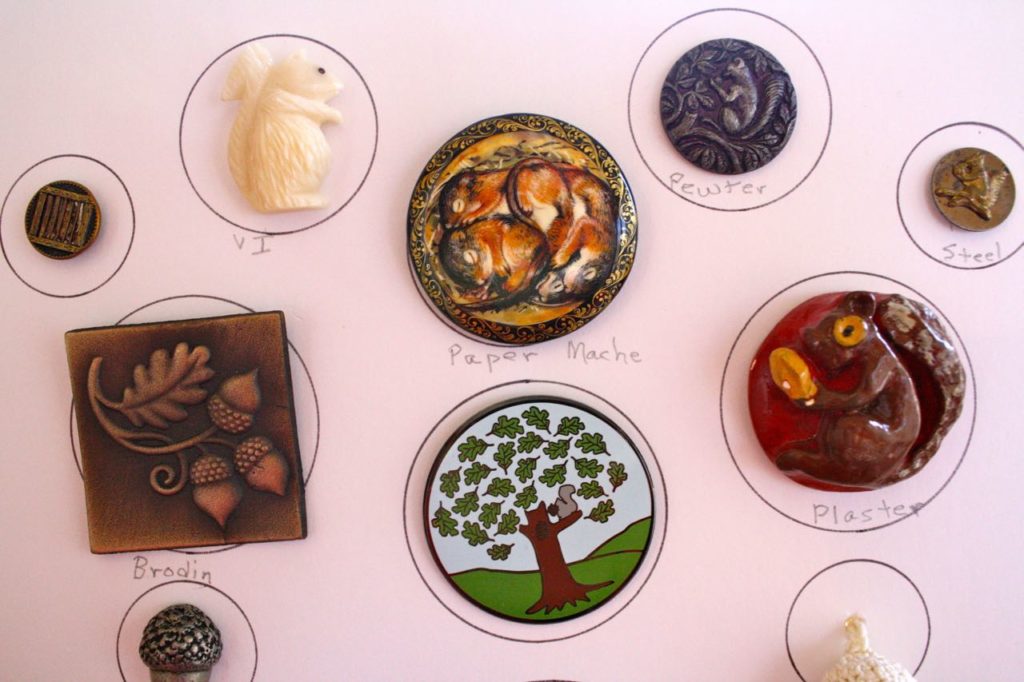
Kareen’s interest came later, when a “lovely lady” offered her a box of buttons to use with her elementary school students. “She’d been a world traveler, and I looked through the box and thought ‘These are not first-grade buttons,’” she says. Then in 1996 the annual convention of the National Button Society was held in nearby Cedar Rapids and Kareen was hooked.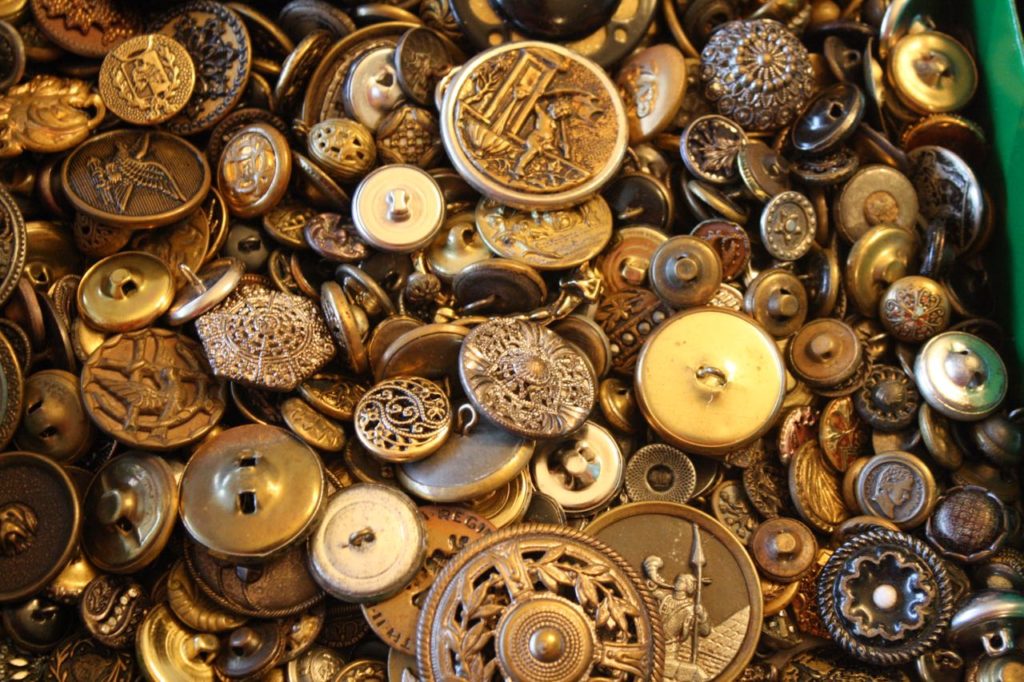
It was at that meeting that Kareen was introduced to button competitions, in which buttons are mounted on 9”x 12” cardstock, called a “tray.” Categories for trays include designations for materials (horn, bone, china, fabric, plastic), the era in which the button was made (“modern” in the button world is defined as anything after 1912, when buttons began to be regularly mass produced—anything before then is designated “old”), and imagery (flowers, ice cream cones, maple leaves, frogs). There are categories for specialties (buckles, rivets, and buttonhooks), age and experience (junior, first-time exhibitors), and creative mounting (in most categories, trays are arranged simply on white cardstock, to keep the focus on the buttons).
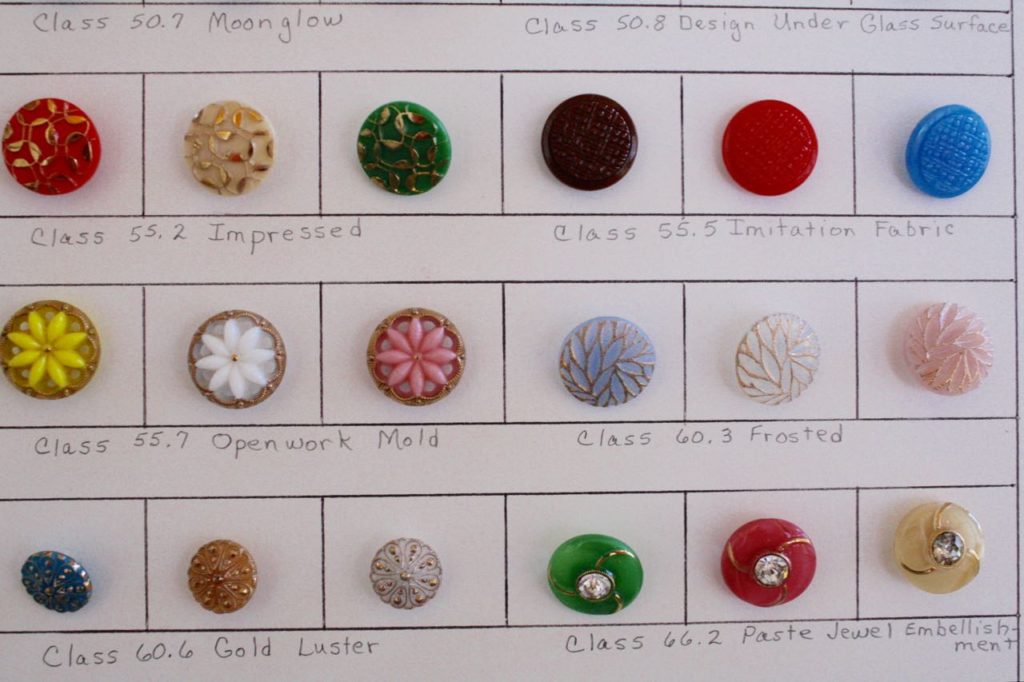
Competition judging is strict. “You have to meet the criteria,” says Barb. “If the category is celluloid and you put on one jasperware button, you’re done.”
Although it sounds harsh, Kareen and Barb agree that they learn more and arrange their buttons more creatively when working within proscribed boundaries. “For example, if the category is ‘horses,’ you might have horse buttons that feature different materials, buttons with horses doing different things like jumping or trotting, and you’d want variety and rarity in your tray,” says Kareen, who along with Barb is a competition judge. “If you have one sulfite paperweight button you’d want to include it because it’s rare, but you don’t win by one button. It’s the combination that matters.”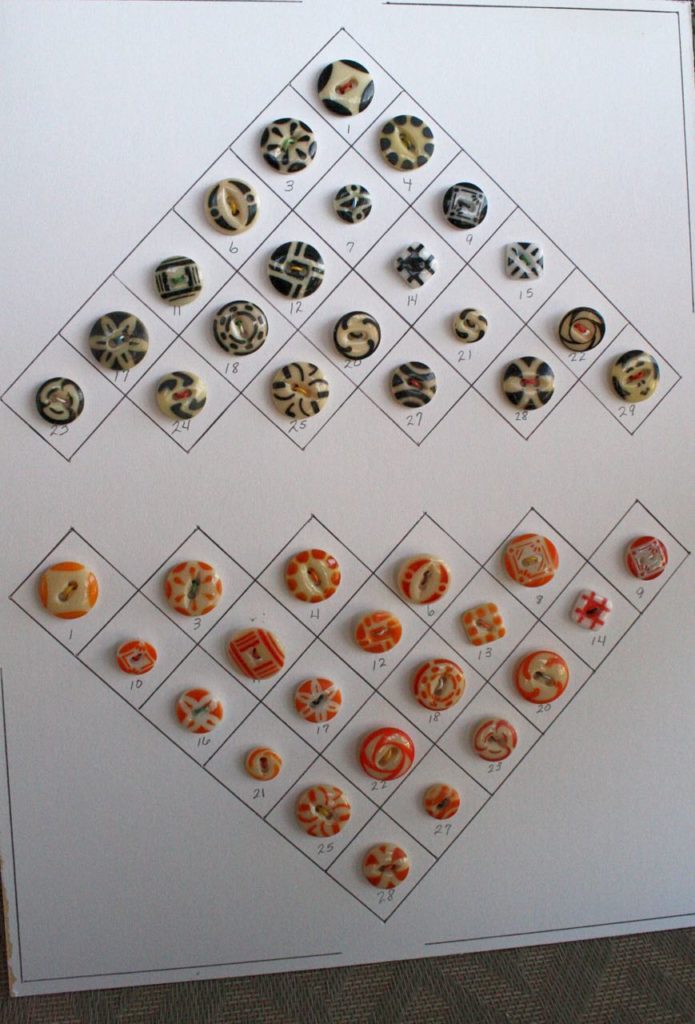
Framed trays of Kareen’s buttons line her walls, and prize ribbons are taped to the back of many. She’s especially fond of glass, wood, and shell buttons and recently developed an interest in patterns, like snowflakes or concentric circles, while Barb is fond of plastic buttons. Both women are orderly, and their fair and careful division of the estate buttons reflected that. “You have to be a bit anal and enjoy details, otherwise you wouldn’t be into buttons,” says Kareen.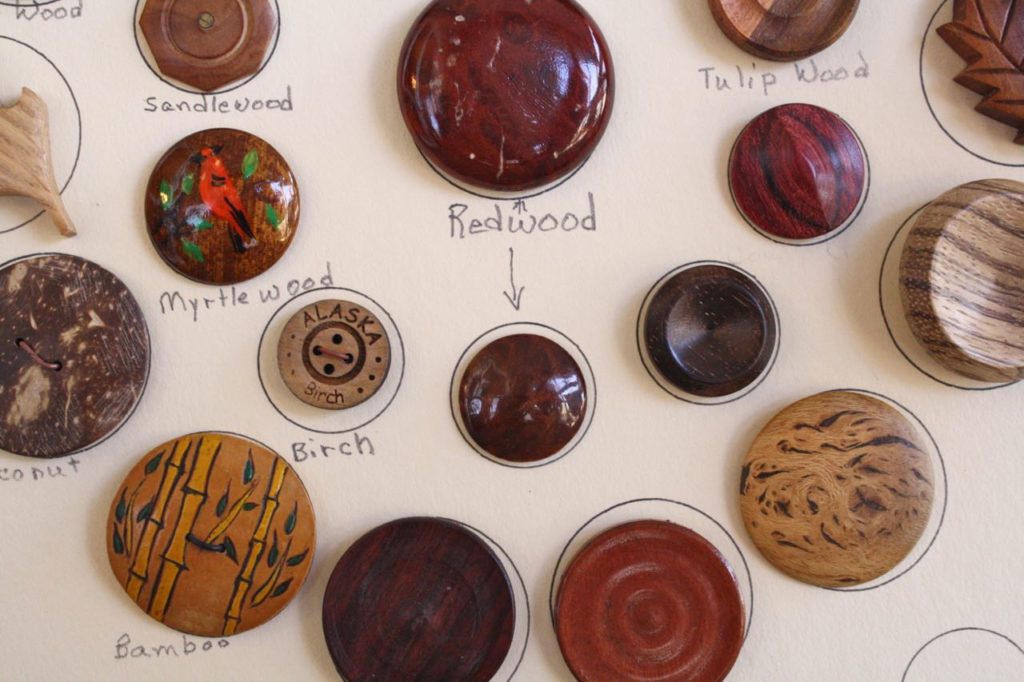
Both women enjoy the artistry of buttons, as well as learning about their composition and the historical aspects of their use. Kareen is working with the local historical society to inventory buttons on their textiles. She recently discovered that buttons thought to be plastic on a dress were actually hand-carved horn. Barb concurred on her analysis and the curator was thrilled. “I like making connections with people who have the same interests,” say Kareen.
To that end, both women are members of local, state, and national button groups, where they trade notes with other collectors, buy buttons from one another, and of course, compete.
“Don’t ever let someone tell you buttons don’t take up a lot of room, because they do,” says Barb, That would be an understatement, coming from a woman whose basement contains 38 file drawers of mounted buttons. “It’s a fairly addictive hobby.”
The National Button Society’s web page is a terrific resource, with information on shows, state and local button groups, and articles written by members. This year’s national convention just ended, but you can put the 2018 event on your calendar: August 19 to 25 in Jacksonville, FL . A number of local and regional shows are coming up soon, along with the Canadian National Convention. Check this link for more information on dates and locations.
This story originally appeared on Etsy's blog on March 1, 2012. All photos by Linzee McCray.

Comments